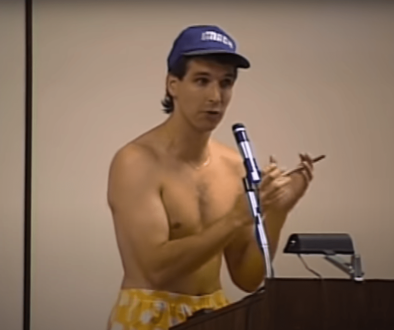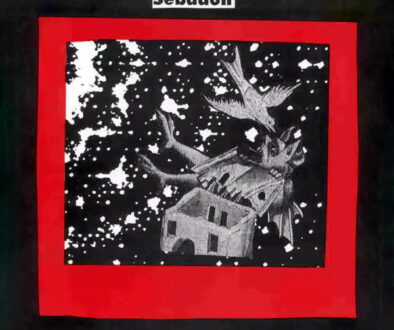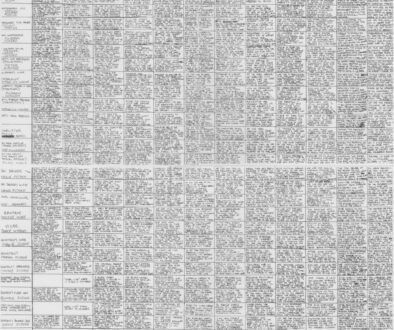Nobody Cares About Anything Anymore (Book Three, Part 55: Big Dave)
Previously in The Last War in Albion: Having failed to jump immediately to the US market on the back of his early Trident and Crisis work, Mark Millar found himself writing Sonic the Hedgehog comics.
You just like offending people, don’t you? Nobody cares about anything anymore. – Grant Morrison, Multiversity: The Just

Millar’s Sonic the Hedgehog work consisted of eleven self-contained stories across eleven issues, mostly in 1993 but with one in 1994 and two—presumably inventory pieces—in 1996. None are extraordinary, and if they did not bear Millar’s name they would seem wholly unremarkable. They are not cynical and nihilistic in the way that Millar’s work for older readers is. And yet looking at them in the context of his career, some of Millar’s trademark obsessions do begin to emerge. Most obviously, Millar leans hard into the idea of Sonic as an egotistical jerk—admittedly a savvy move that acknowledges part of the character’s core marketing appeal. But there are subtler issues too—a running theme of sidekicks and secondary characters who are defined in part by their inadequacy compared to the hero, especially in his first strip, which features Tails, Sonic’s sidekick from Sonic the Hedgehog 2, captured by Doctor Robotnik and turned into an evil cyborg brimming with vocal resentment. This would be a trope Millar would return to, and one it’s hard not to read in light of his own status as a sidekick within the War. Also obviously notable is the comedy “A Day in the Life of Doctor Robotnik,” a strip whose ending, which reveals Robotnik as a fan of romance comics, is difficult not to read in light of Millar’s broader fondness for homophobic jokes.

Something closer to an unfiltered version of Millar appeared in his other strip for Sonic the Comic, Streets of Rage. Based in a beat ‘em up style game in which vigilante ex cops try to rid a decaying American city of crime, the strip was by some margin the most adult strip in the comic. The nature of its setting, with its failed institutions that can only be saved by vigilante violence, lent itself to Millar’s cynicism, but also showcased the kind of innately conservative aesthetics that would come to dominate Millar’s work. The comic was also simply a venue for an only mildly toned down version of the nastiness that pervaded Millar’s other work, however. His first arc culminated in the villain being dumped alive into a vat of molten steel, a barely sanitized version of the resolution of Purgatory, while his second features a scene in which a character researches on a computer while narrating about how “There’s always one jerk in every class who’s into computers. One specky wimp with rich parents who drive him to school. I should know—I’ve got one pinned under my skate shoe right now,” a bit of bullying nastiness that evokes Insiders. In both cases the work is tamer and less confrontationally offensive than Millar’s other work, but the underlying attitudes are viscerally clear.
If Sonic the Comic lacked opportunities for Millar to be confrontationally tasteless, however, he more than made up for it in the Summer Offensive, especially on Big Dave, the one strip in the project to be cowritten by Millar and Morrison. There is always, with any creative person, the grim but often entertaining debate to be had about what their worst work is. For Grant Morrison, however, any such debate must necessarily be succinct, as Big Dave is the only remotely serious or credible candidate. It is a work with few parallels within the War, containing all of the worst elements of Morrison and Millar’s toxic dynamic in a completely unfettered manner. It is viscerally unpleasant on almost every conceivable level—a boorish strip with bad intentions and a core of genuine cruelty. Even Steve Parkhouse, on art duties, is reduced to crass banality, left drawing what is essentially a witless gross-out version of The Bojeffries Saga.

Morrison and Millar concocted two arcs for the Summer Offensive, each running four issues. The first, “Target: Baghdad,” sees the hulking Big Dave, the “hardest man in Manchester,” recruited from out of the crumbling tower block of Nelson Mandela Court, depicted as an outright war zone, its exterior featuring blasted out chunks of rebar, smoldering wreckage, and corpses hanging from the lamposts outside. The problem, it’s explained, is that Saddam Hussein has enlisted the help of two aliens who have given him a “love gun” that, as John Major explains, is “capable of turning our best troops into nancy boys.” This is the setup for several pages of homophobic jokes that are as uninspired as they are distasteful before Big Dave is hit by the Love Gun but turns out to be too hard a man to ever be turned gay, decking Hussein for calling him a poof, overthrowing his regime, and getting hailed by the Iraqis as a bold liberator.
The second arc, “Monarchy in the UK,” sees Dave fighting Princess Diana’s nefarious conspiracy to replace the Royal Family with robots so that she can take over the monarchy. This becomes an opportunity to depict Diana and Sarah Ferguson as gold-digging shrews (with an inexplicable additional decision to depict both of them as “mannish” in a way usually reserved for the sort of transphobic humor that is, ironically given how often Morrison engages in it, otherwise absent from Big Dave), along with a more general backdrop of misogyny. (This time Dave, attempting to destroy the robots, murders the entire Royal Family and ends up in a threesome with Diana and Sarah Ferguson.)

Morrison and Millar defend the series on the well worn grounds that it’s a satire, specifically of the Rupert Murdoch’s right-wing nativist tabloid The Sun, whose rhetorical style Morrison and Millar borrow for caption boxes like “Saddam Hussein, the Bloody Beast of Baghdad has turned our lads into nancies with his alien Love Gun and it’s up to Big Dave and Special Envoy Big Terry to straighten out these camp commandos!” and “The 2000 AD readers’ phone poll says — it’s a damned disgrace! Time to bring back capital punishment and behead these trollops!” In Morrison’s view, their intent was obvious. Speaking at the time, they argued that “It should be pretty obvious to anyone with a quarter of a brain that Big Dave is ridiculing and challenging the whole concept of the Thatcherite, classless, Sun-educated man. It’s fucking obvious to me anyway,” and talking with David Bishop for the 2009 book Thrill Power Overload they claimed to have been “shocked by the number of readers who couldn’t grasp the satirical aspects of Big Dave at all, in spite of the fact that they were nailed to every page. Five years later the same detractors were all reading Loaded and laughing at South Park, so they can all fuck off.”

In one sense Morrison is right. It’s obvious enough that Big Dave is not offering a sincere and straightforward rendition of The Sun’s rhetorical style. It is too over the top, too full of grotesques, and too fundamentally silly to constitute actual right-wing propaganda. But there is more to satire than just not being the thing you’re nominally criticizing. And if Big Dave is supposed to be a satire, it’s far from clear what its beef with The Sun actually is. Nothing within it, after all, constitutes any sort of criticism of nationalism, sexism, racism, or homophobia. None of these are revealed as harmful on any level. Indeed, the strip largely seems to revel in them, using the veneer of satirizing The Sun as little more than a pretext for engaging in bigotry. At the end of the day, after all, there’s little that distinguishes the allegedly satirical homophobia of Big Dave with its writers’ copious use of homophobic slurs in interviews. The truth is simply that Morrison and Millar enjoyed being homophobic. They thought it was funny. And so they wrote Big Dave because it gave them a lot of opportunities to do just that.

In the end, for all their protests that the strip is satire, the record of things Morrison and Millar have said about Big Dave makes its bad intentions clear. Morrison, for instance, described the strip in 1999 as “like South Park before its time, real non-political stuff and they were letting us away with it,” a description that undermines any claims to be satirizing The Sun, an endeavor that would necessarily be political. At the time, meanwhile, they were shockingly contemptuous of queer critics of the strip, decrying how “only seem to take an interest when they can dig up something which appears to cast them in a victim role. Too many of the so-called spokespeople for so-called minority groups are simply obsessed with the idea of fostering a climate of fear and suspicion by only focussing on the whole ‘them and us’ aspect of their lives. They’re just trying to reinforce the idea of themselves as being despised members of society because that leads to greater bonding within the minority group and increases the power of the group’s self-appointed leaders. Persecution is then made intrinsic to their self-image and leads to grandiose ideas of the group members as somehow so fucking important and influential that they must be targets of some vast conspiracy against their lifestyle.” And Millar is similarly blunt, responding to this shocking diatribe of Morrison’s with a mocking “I thought he was just a tough bastard. What’s all this political shite?” More extensively, in 2003, he gave an interview in which he was wholly open about the strip’s pleasures, describing it as “shockingly offensive, completely anti-gay, anti-foreign, anti-everyone and ranks as one of the best things either of us has done.”
All of this is odious. And yet perhaps the most insidiously two-faced thing Morrison said about Big Dave came in their interview with David Bishop for Thrill Power Overload, in which they reiterated their belief that Big Dave was “one of the best things I’ve ever worked on” and explained how it was “a response to a decade of thoughtless, ignorant political correctness, anti-sex and girls in flat shoes. I’m quite proud that we managed to correctly identify that huge incoming wave of fun, sanity and sex which made the early 1990s so enjoyable, and then became so stupid and ugly.” As if Big Dave wasn’t part of the transformation from the giddy and transgressive fun of Crisis and the rest of the early 90s comics renaissance that brought things like St. Swithin’s Day and Tank Girl into the chortling, broish edgelording of the Bush/Blair years during which Morrison talked to Bishop. As if the people who insisted that, actually, being racist, sexist, and homophobic was bad have been anything but proven right in the years since. As if Morrison and Millar deserve some sort of gold star for going darkly stupid and ugly before anyone else.
What made all of this worse, of course, is that the people harmed by Morrison’s sniggering cruelty in Big Dave were the very people they had just finished writing about so movingly in Doom Patrol. Responding in 1993 to Mark Millar’s assertion that “There are so many social outcasts and freaks reading comics. Nothing wrong with being a social outcast, but they ought to know their place and when to shut it,” Morrison proclaimed that “The comic world is polluted with sad f***ing oddballs and twisted wretches,” a downright astonishing claim given that this was the exact audience they’d been openly courting with Doom Patrol. And sure, over the rest of their career they’d decide what side they were actually on, and make the right choice at that. But that doesn’t change the fact that in the summer of 1993, egged on by their toxic best friend, they looked at the very people they’d built their career by being kind and empathetic towards and said “fuck it, I’m gonna be the bully.”





November 16, 2022 @ 6:08 am
Interesting interview with Morrison here, which feels oddly like a direct response to this article: https://www.thegutterreview.com/neurotic-boy-outsider-an-interview-with-grant-morrison-30-years-in-the-making/